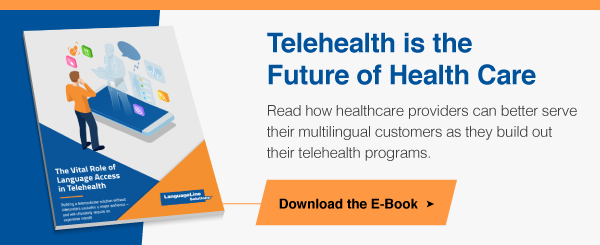Telehealth has the potential to improve healthcare access, but without interpreters, it may inadvertently worsen minority health disparities.
A new report from UCLA says that policymakers should ensure that telemedicine doesn’t leave vulnerable populations behind, both during the COVID-19 pandemic and beyond.
One in five U.S. residents speaks a language other than English at home. That figure is sure to grow, as 90 percent of America’s population is expected to come from immigration in the coming decades. The authors of the report note that in California, nearly 44 percent of the population speaks a language other than English at home, and Spanish-speaking physicians are the most under-represented in the physician workforce.
“When designing and implementing health technology, culture, needs, and population demographics must be taken into account,” they write. “Medical interpreter use will need to be systematically incorporated into technology to ensure language-concordance is addressed.”
The full report can be read here.
A recent article in The Verge titled “Telehealth Wasn’t Designed for Non-English Speakers,” summarized the issue well:
“Telehealth is convenient for some people: it cuts out the drive to an office and the time in a waiting room, trimming an hours-long event down to minutes. But it isn’t easily accessible to the 25 million people in the United States who speak little English (and) are more likely to live in poverty. Even if they are able to get online, most of the systems that support telehealth — like hospital portals and video visit platforms — are hard to access for people who primarily speak other languages.”
Our Experience
This reporting is entirely consistent with what LanguageLine is seeing in terms of traffic patterns and language-requests for telehealth-related services.
We have heard from several clients that non-COVID-related healthcare visits from limited-English patients have dropped by as much as 90 percent from their pre-coronavirus levels.
The promise of telehealth is that it will democratize care by making it available to populations that might not otherwise receive it. Failing to consider language when implementing telehealth, however, could have the opposite effect.
Healthcare organizations must demand that their telehealth-service providers support people with limited-English proficiency by allowing real-time access to language interpreters via voice and video.
LanguageLine Can Help
There are many reasons why painful health disparities exist. LanguageLine aims to help address this issue by expanding and simplifying options for telehealth platforms to integrate interpreter support.
To help providers overcome language barriers in health care, we recently launched LanguageLine for Telehealth. This service gives healthcare providers the much-needed ability to invite professional, medically trained language interpreters into their telemedicine sessions.
Through LanguageLine for Telehealth, foreign-language interpreters can be reached on-demand in more than 240 languages, including American Sign Language.
With just a few simple steps, LanguageLine for Telehealth can easily be implemented on services like Zoom, Microsoft Teams, Google Meet, WebEx, Skype, and GoToMeeting, as well as most major telemedicine platforms.
Please contact us to learn more about LanguageLine for Telehealth.
Jeff Cordell is LanguageLine’s Chief Information Officer.


